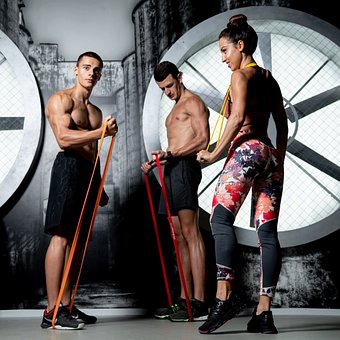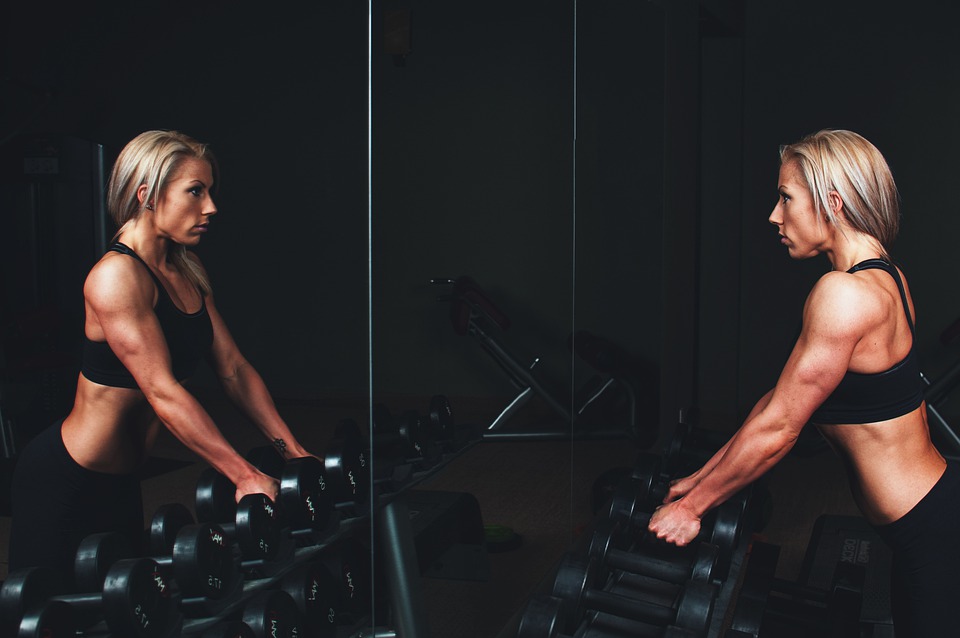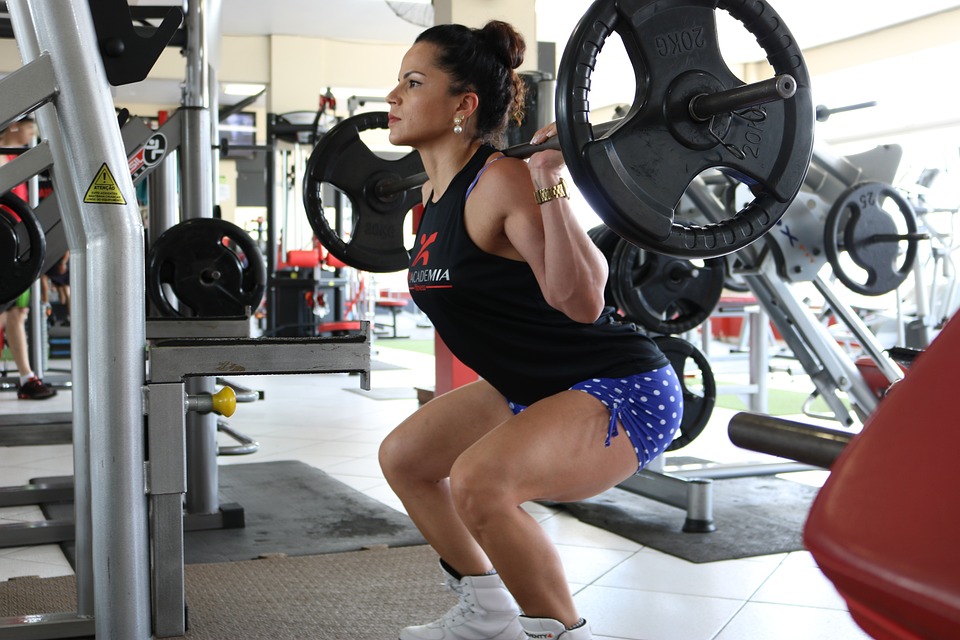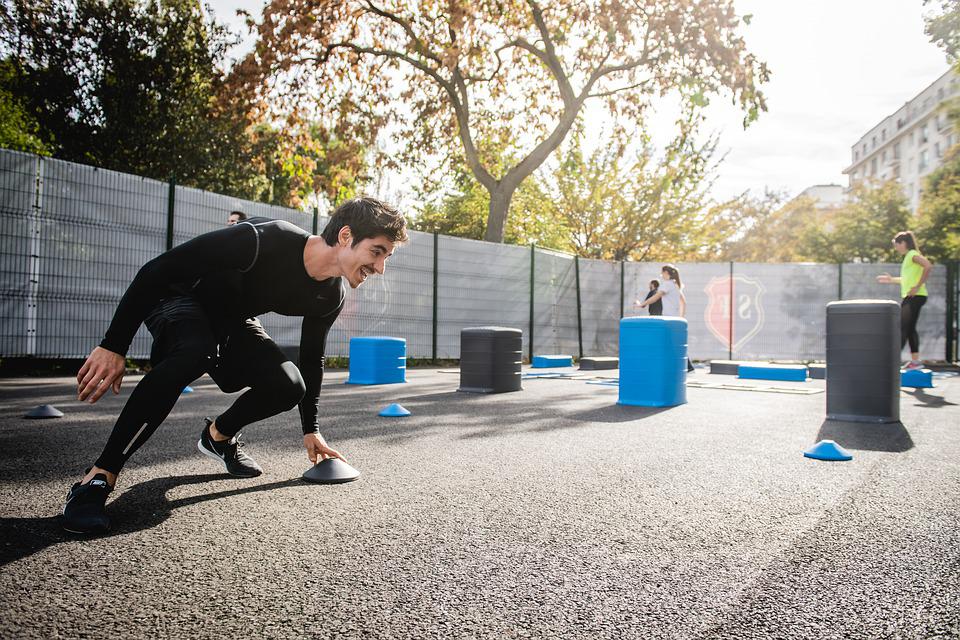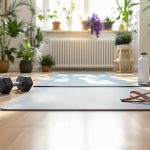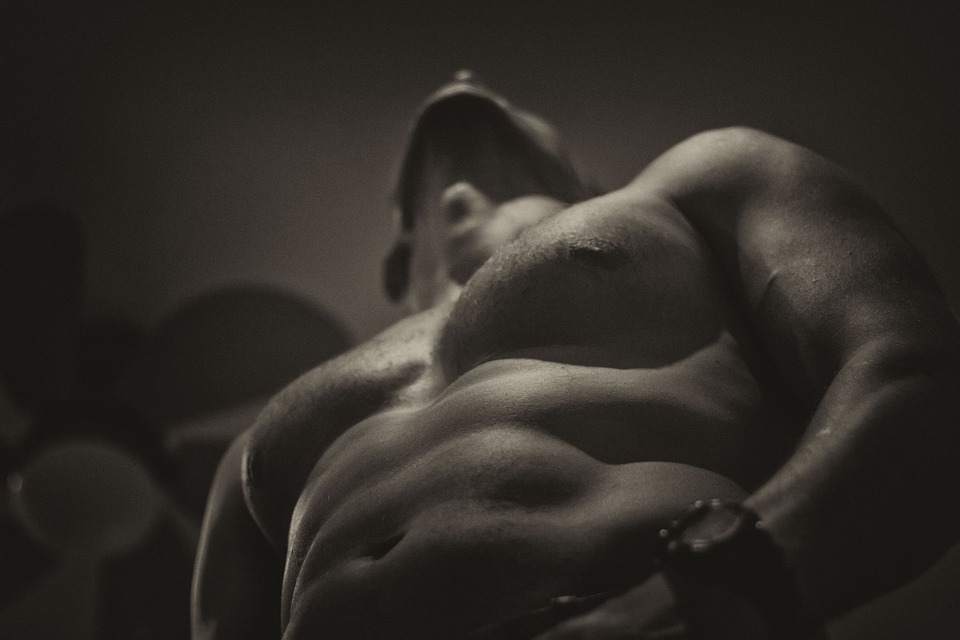
Why should you train the core muscles?
A stronger core can help boost performance, increase injury resilience, and help maximize your ab appeal. Below are four main benefits of training the core muscles with resistance bands, weights, and body weight.
Improved balance and stability
A strong core is necessary for stabilization during any movement, be it in the gym, on the field/court, or in everyday life. By increasing the strength of your core muscles, you can create better balance and stability throughout your trunk, which will help you to resist any opposing forces that might throw you off balance during dynamic movements.
Stronger lifts
If you want to improve your performance in exercises like squats, deadlifts, and presses, you should focus on strengthening your core muscles. This will help increase spinal stability, intra-abdominal pressure, and pelvic control, which are all important for generating tension and remaining stable during these lifts.
Injury prevention
Lower back injuries are very common in strength training. This is often due to a lack of core strength, pelvic stability, and posture. By increasing core strength and awareness of what correct posture and technique are, you can help minimize injury risks both in training and in everyday life.
Aesthetics
Revealing carved abs and obliques starts with diet, but the ideal way to make the core pop is to develop the muscles using core exercises and resistance training. With proper nutrition and the right exercises, you can achieve the lean and athletic look you want.
The most effective ab workouts to do at the gym
Pull-up bar
- Hanging leg circles
Holding a pull-up bar with your palms facing each other and your arms extended, draw a circle in the air with your feet. Your feet should not touch the ground and your core should be engaged.
Abdominal muscles should be contracted to avoid excessive movement. Move in the opposite direction to complete one set, with eight to ten repetitions in each set.
Doing the move in a captain’s chair will make it easier and provide more stability.
- Hanging bicycles
This exercise may appear as if you are running through the air, but it is effective. Hold onto a pull-up bar with your palms facing each other and your arms extended. Use your core muscles and pull your knees up so they form a 90-degree angle with your thighs parallel to the floor.
Bicycle your feet by pedaling them flexibly as if you were riding an actual bicycle. Maintain control while repeating this process for 30 seconds as quickly as possible.
- Hanging side-to-side knees
Do the recommended number of reps, then repeat on the left side. To do a side leg lift, grip a pull-up bar then raise your knees towards the right side of your torso, keeping your legs bent. Pull your knees as close to the right side of your chest as you can, then slowly lower back to the starting position. Repeat on the other side.
To do this exercise, start by pulling your knees to the right side of your chest. Then, do the same thing on the left side. Doing both sides counts as one repetition. Repeat this eight to ten times.
Draw both legs straight up to your chest.
Cable machine
- Cable isometric hold
Attach a single-grip handle to the low pulley. Don’t let the cable machine scare you, it’s not as complicated as you might think. Put a lightweight (10 pounds or less) on it and adjust the knob so the carriage is level with your chest. Stand next to the machine, with your left side facing away from it. Attach a single-grip handle to the low pulley.
Stand with your feet shoulder-width apart and hold one end of the cable in each hand. Step away from the machine until your arms are fully extended and you are in a half-squat position. Hold this position steady.
To do this move, start by engaging your abs to hold the handle straight in front of your body. Next, focus on perfect posture and hold for 30 seconds. Finally, switch sides.
- Cable oblique crunch
Attach a medium weight to the cable machine and position the carriage close to the floor. Stand with your right side next to the machine and grab the cable handle with your right hand. Put your left hand behind your head.
Now, twist your torso to the left, away from the machine, and lean to the side, performing a standing side crunch. Return to the starting position. Do 10 to 15 reps, then repeat on the other side.
- Side plank with cable hold
Rest one end of the cable on your ankle, keeping your other leg slightly bent and in the air. As long as you understand how to do a bodyweight side plank, this will not be difficult for you. Get a lightweight and put it on the cable machine. Move the carriage down to the lowest setting and stand a few feet away from the machine. Place one end of the cable on your ankle and keep the other leg bent with the foot in the air.
To do this exercise, hold the cable handle in your left hand, then come into a side plank on your right forearm. Make sure to brace your core and stack your feet. Extend your left arm so that your body forms a T shape. Hold for 30 seconds, then repeat on the other side.
- Overhead kneeling cable hold
Step 1: Attach a lightweight to the cable machine.
Step 2: Move the carriage down to a setting close to the floor.
Step 3: Start with the right side of your body facing the machine, with your right foot and left knee on the floor.
To do this exercise, hold the cable handle in both hands, then pull the handle overhead. Keep your body straight and your core engaged.
After holding for 30 seconds on one side, repeat the process with your left side closer to the machine.
Bosu ball
- Mountain climbers
Position the Bosu ball so that the flat side is facing down, and the bubble side is up. Grip the edges of the flat side of the ball, and start in a plank position.
Run in place, bringing your knees up to your elbows as quickly as possible.
To make it easier, bring your legs in, toward your chest instead of to your elbows.
- C-sit
Sit on the Bosu ball with the flat side down, with your knees bent and together, feet on the floor, and back straight. Engage your core muscles.
To maintain your balance, raise your arms straight at your sides and lean back slightly. Keep your feet off the floor and hold the position for 30 seconds.
- Side crunch
Sit on the Bosu ball with your right hip, so that the flat side is facing downwards. Extend your legs straight, and place your hands behind your head with your elbows bent. If you need more support, you can place your right hand on the floor.
To work your obliques, start by crunching to the left side and using your core muscles to help you stay balanced. Imagine bringing your left elbow to your left hip to really work those muscles. Do 10-12 repetitions, then switch sides and repeat.
Isometric and breathing exercises
The following group of exercises helps to develop deep core strength, which can be very beneficial for those who want to improve their spinal alignment and breathing control when lifting. These exercises should be performed slowly and with proper form in order to maximize their effectiveness.
- Standing Pallof hold + reach
Use the standing Pallof hold + reach drill to improve your pelvic alignment and brace your core while upright. The further away you are from the anchor point, the greater the tension on the band. It is key to not allow the pelvis to rotate or the shoulder to slouch forward. This drill also helps improve scapular control and stability while performing the reaching motion.
- ½ Kneeling Pallof hold + reach
A good way to improve your core strength and stability is to do a drill where you start in a standing position and then lower yourself down to a half kneeling position. This requires good control of your pelvis to resist the natural tendency of the hips to rotate. It also activates your obliques, which is helpful for people who have trouble with unilateral movements such as lunges and split squats. Finally, this drill will teach you the importance of bracing your core and contracting your glutes at the same time in order to maximize your spinal stability and strength.
- Full kneeling Pallof hold + reach
If you do this movement while kneeling, it will be more difficult and force your glutes and obliques to work harder since the leg muscles can’t help resist the rotational force at the hip. This is a good way to improve your pelvic stability, build strength, and prepare for more advanced exercises.
- Dead bug with lateral Pallof hold + reach
The dead bug is a challenging core exercise that helps reinforce deep breathing, core strength, and spinal alignment. Adding a Pallof hold + reach to this already challenging movement can help increase the activation of the obliques and pelvic stabilizers, especially ones that help keep the pelvis from shifting to one side. This could be a good option for individuals who find they shift to one side while performing squats or another compound, bilateral movements. It is important to keep the lower back flat on the floor at all times, regardless of where the legs or arms are.
- Plank row with band
You can help build isometric strength during a more dynamic movement experience by doing the plank with a band row. This is more applicable to real life than just doing the plank by itself. The rowing motion is more like a vertical pull than a horizontal pull, so it also helps increase scapular strength and control.
- Side plank row with band
The side plank is a plank variation that helps stabilize the pelvis to minimize rotation of the body, as well as increase oblique strength and resist pelvis rotation. Adding in the band row will educate the individual on how to properly perform a row while anchoring the core muscles.
Rotational core exercises
Rotational exercises help with increasing pelvic control and stability, as well as developing stronger internal and external obliques. These exercises also come in handy for athletes who often rely on rotational force and movements during activities like running, sprinting, throwing, punching/kicking, and swinging. You can either perform these movements with a fixed stance to isolate the obliques or allow the body to pivot and the feet to rotate with the hips while maintaining an isometric core contraction during the movement.
- Resistance band woodchoppers (Parallel)
You can develop rotational strength by chopping wood from a variety of angles. For example, if you start the chop from a parallel path, you can practiced maintaining balance and stability.
- Resistance band woodchoppers (High to low)
When you chop, changing the starting position from high to low can add more variety to the motion. This can help you better mimic movements like slams and wood chopping, and train your body in a more diverse and dynamic pattern.
- Resistance band woodchoppers (Low to high)
Using a low-to-high woodchopper motion is a great way to simulate movements like golf swings, hitting a pop-up, or rounding out a chopping program that also includes parallel and high-to-low chops. All of these motions can be done from a standing position, kneeling, and with or without rotation of the torso, hips, and feet.
- Russian twist with resistance band
The Russian twist is an oblique strengthening exercise that can be done with or without a resistance band. If you add a resistance band, it will increase the difficulty of the movement. To do the Russian twist with a resistance band, attach the band to an anchor point, and then rotate your body against the resistance. You can do this exercise with your feet on the floor or lifted off the ground, and you can either do it for a certain number of repetitions or hold the position for a set amount of time.
Abs roller
- Abs roll with side rotation
If you have never tried an abs roller, you will be pleasantly surprised by how much fun it is to use. Start by kneeling on a mat with your knees hip-width apart. Next, grip the handles of the abs roller and roll forward, engaging your core muscles the entire time.
Rotate the abs roller toward the right as you come forward, so you engage your obliques. Roll out until your hips are in line with your shoulders and your knees, without letting your hips fall to the floor or hiking your hips up.
slowly roll yourself back to the starting position and then back out again, this time curving to the left. Each time you roll out and back counts as one repetition. Do ten to twelve repetitions.
Flexion/extension exercises
The following resistance band exercises improve core strength and promote proper alignment during movements. They are more effective than bodyweight core workouts.
- Banded curl up
The curl-up is a crunching movement where you partially sit up, keeping your lower back on the floor. This is different from a regular sit-up, which can put stress on your spine and discs, according to some research. Doing partial sit-ups instead helps you build abdominal strength while minimizing stress on your back.
- Banded side bend
In order to strengthen your obliques, you can do side bends. This exercise involves both bending and extending your spine in a slow and controlled way so that your obliques are activated, but you also minimize stress to your spine. Lateral flexion of the spine is a healthy movement, but we want to increase core strength so that our bodies can resist external forces that may cause us stress.

